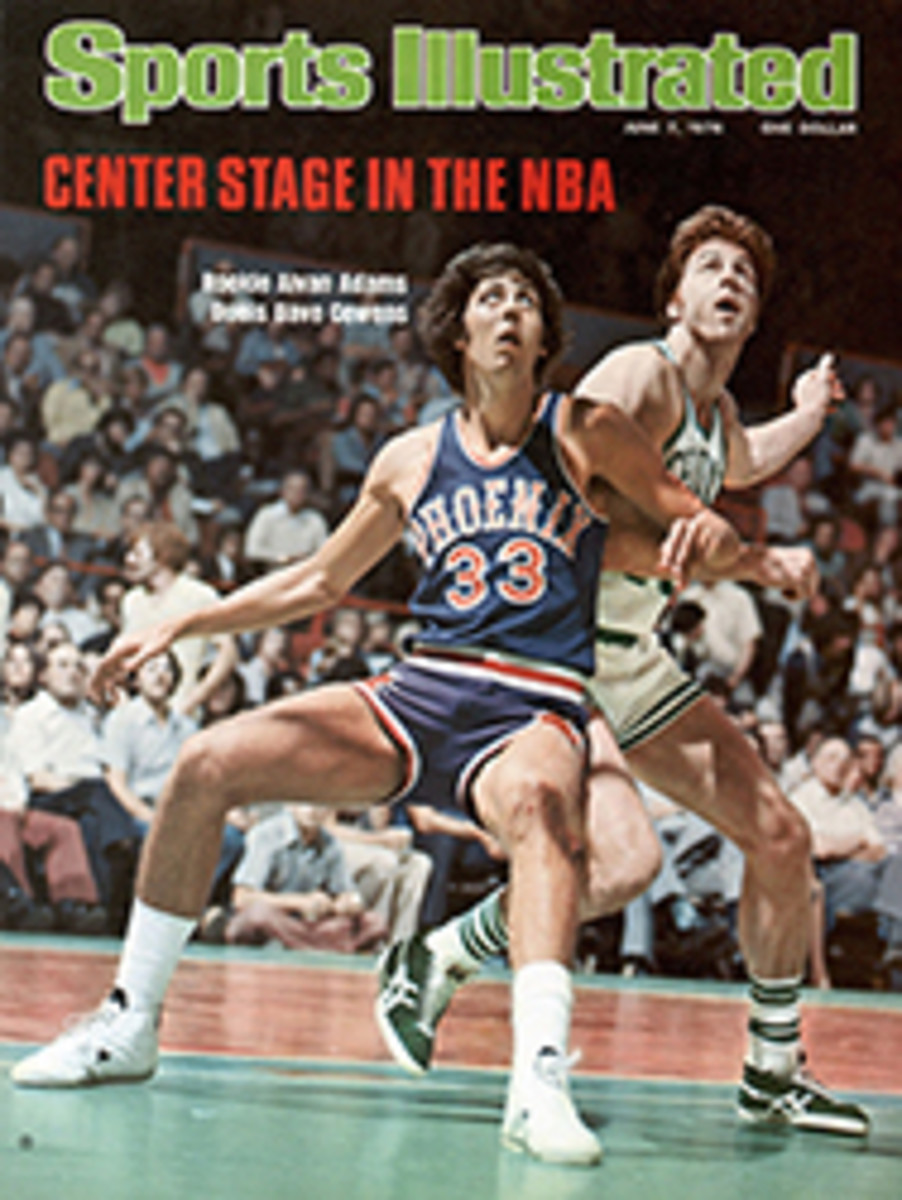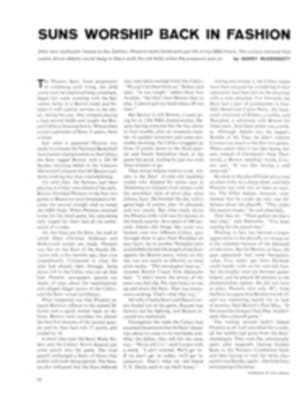
THE SHOW OF MUSCLES AT THE WHITNEY WAS VITIATED BY ACADEMIC FLABBINESS
Not long ago New York's Whitney Museum did some inept but well-intentioned pioneering with a symposium called "Articulate Muscle: The Male Body in Art"—a presentation of three Mr. Universe types as living objects of art. It was rather ironic that body building, a sport with a low repute in this country, was the one to bridge the gap between art and athletics and that its classical implications were substantial enough to be celebrated in a world-famous and highly respected museum. Yet the more than 2,500 people attending this supposedly exciting and ground-breaking esthetic happening left feeling as if they'd just been to a compulsory night-school class.
The event was inspired by a book called Pumping Iron, perhaps the first serious book ever written about body building. Its author, novelist and former weight lifter Charles Gaines, helped persuade the Whitney to organize the event and was a member of a panel chosen largely from the academic community to see and discuss the bodies of Frank Zane, Ed Corney and Arnold Schwarzenegger, not in athletic terms but as artists living inside their own creations. Gaines, an aristocratic Southerner who looks as if he ran a string of plantations in his spare time, is quoted in Pumping Iron as saying, "The body itself is an art medium: malleable, capable of being aesthetically dominated and formed the way clay is by a potter."
When every available inch of floor space was occupied by sitting bodies—except for a central revolving platform where the musclemen would bare themselves to polite society—Charles Gaines and the professorial panel were introduced.
Zane then mounted the platform. Gaines introduced him as one of the world's finest posers, explaining that he posed in a melodramatic and choreographed style with very little flexing of muscles. And, he added, Zane was "the most classically symmetrical man in the history of body builders." Zane is square-jawed and handsome, and owns a physique that looks as if someone had magic-wanded a perfect marble statue into flesh.
The panelists sat stiffly, their fingers tapping. They took turns talking in a bone-dry style about the role of muscular men in ancient and modern art, history, literature and religion. Some of them were against body building, some of them for it. None of them spent any time talking about or seriously regarding the three human beings the audience had paid to see.
The evening had an unreal air about it: it was like tuning in to the Super Bowl, only to hear Howard Cosell announce that this year they would concentrate on the national anthem, halftime ceremonies and sideline interviews and provide only occasional glimpses of the game. Neither the audience nor the panelists had time enough during the much-too-brief posing sessions to form any opinions about the men's artistic merit. The posing was not set to music as it sometimes is, which would have been helpful.
Sitting through the scholarly gobbledygook, often seeing the wrong slide appear to illustrate some textbook example in a room far too bright for slide showing, made the initially enthusiastic audience audibly restless. A lady suggested, "Take good notes—there might be a pop quiz afterward." And a venerable executive muttered, "Now I know why my son dropped out of school."
Near the end a foam-rubber cushion floated lazily by the panelists' noses, a harmless soft-sculpture protest. For, besides being unforgivably dull, several remarks were also questionable. One panelist said that a doctor he knew believed weight lifting might well be harmful, whereas other doctors have determined that weight lifters are unusually fit, with less body fat than the norm and spectacular cardiovascular capacities. Another scholar complained about body building's discrimination against females. But women may not have the proper hormonal balance to develop musculature as clearly defined as men's.
Ed Corney was the second poser. He is known for his style and grace and has, for a man of short stature, one of the most perfectly developed of builds. Corney swung from one remarkable pose to another. If one doesn't accept body building as fine art, posing should at least be considered a performing art.
Then came the star, the man the audience had been waiting for—Arnold Schwarzenegger. Gaines called him "the greatest body builder who ever lived." Schwarzenegger leaped onto the platform in skintight brown briefs, his body shining like the August moon. He was the tallest and biggest of the three, and the most impressive, despite the fact that he has not been in top shape since he retired last November. He drew wild applause when he sailed into a perfect imitation of The Thinker. When he finished posing, he threw up his arms and bounded off the platform while the audience cheered enthusiastically. Then he blew a kiss to his fans, in a sense simultaneously kissing off any detractors.
The body builders dressed before reappearing to answer the panelists' charges. Unlike the panelists, they had no notes and spoke straight and clear. Maybe because they each carried big sticks—arms and legs—they spoke very softly, even graciously.
Zane suggested that people who view him with antipathy must be "Projecting their own feelings of inadequacy" onto him. But neither he nor the other two men pretended that art was their main concern: they consider themselves primarily athletes.
When Schwarzenegger spoke in his rich Austrian accent, he was glowing with obvious rapture. "I actually feel that I'm in heaven being here tonight," he said. "It is the greatest night of my life." The next day he was more qualified in his praise. He told some of his friends that he had ambivalent feelings about the whole thing. "In a personal sense it was terrific. But in every other way," he said, laughing, "it was a total disaster."

